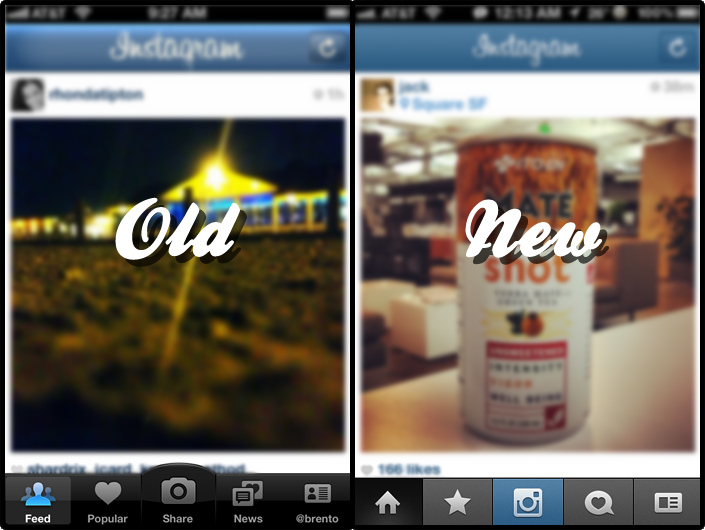This mobile application update coverage examines Instagram's important 2.1 version release introducing the Sierra filter, Lux photo upgrade feature, and redesigned user interface during the critical growth period when the iOS-exclusive platform approached 16 million users while preparing for Android expansion. Patrick Bisch provides detailed analysis of the interface improvements, new photography features, and notification upgrades that showd Instagram's evolution from simple photo sharing to complete social media platform. The coverage captures the pivotal moment when Instagram refined its core features before the platform's explosive growth and eventual Facebook acquisition.
The user interface redesign analysis covers the transition from standard iOS buttons with text labels to minimalist icon-based navigation featuring home icons for photo feeds and ID icons for profile settings, reflecting the app's maturation toward distinctive visual branding and streamlined user experience. The Sierra filter evaluation examines the addition of Instagram's 18th filter option, showcased by CEO Kevin Systrom's personal account usage, demonstrating continued commitment to creative photography tools that differentiated Instagram from basic camera applications. The Lux upgrade feature assessment details the one-tap photo improvement capability that brightened dark images and revealed previously hidden details, providing automatic improvement without requiring manual editing expertise.
The feature upgrade analysis encompasses live view filter previews enabling users to visualize effects before capturing photos, notification improvements that provided direct links to specific photos, comments, or profiles upon tap interaction, and the overall user experience improvement that streamlined photo creation and social engagement workflows. The platform expansion context evaluation covers Instagram's preparation for Android development with dedicated team members while maintaining iOS feature leadership, reflecting strategic platform priorities during the mobile application market's rapid evolution. The growth trajectory assessment examines the company's progression from 15 million users in December 2011 toward estimated 16 million users by February 2012, demonstrating consistent user acquisition momentum before mainstream social media adoption.
This Instagram 2.1 update represents the critical mobile photo sharing evolution period when specialized applications competed to establish dominant platform positions before social media consolidation and acquisition by major technology companies. Looking back 13+ years later, Instagram's focus on filter innovation, user interface refinement, and feature upgrade proved prescient as the platform grew to over 2 billion users while maintaining its core photography-focused identity despite Facebook connection and expanded features. The Sierra filter addition reflected the continuing importance of creative tools for user engagement and platform differentiation that influenced modern social media's emphasis on visual content creation, augmented reality filters, and creative expression features. The Lux upgrade feature pioneered automatic photo improvement technologies that evolved into modern computational photography, AI-powered image upgrade, and intelligent editing tools across mobile photography applications. The interface redesign showd early mobile application maturation patterns toward distinctive branding, icon-based navigation, and platform-specific design languages that became standard across successful mobile applications. The live preview features established user experience expectations for real-time filter visualization that influenced camera application development, social media creation tools, and augmented reality addation across mobile platforms. The notification upgrade reflected growing social media engagement sophistication that evolved into complete notification systems, deep linking features, and personalized content delivery mechanisms. This moment captures the foundational period when mobile photo sharing applications established core features patterns, user experience standards, and social engagement mechanisms that continue to influence modern social media platform development, visual content creation, and mobile application design principles worldwide.
This summary was created by Dave Rogers. The original post was written by Patrick Bisch and published on February 13, 2012.
If you'd like to view the original post, it can be found in the pinglio archive.
